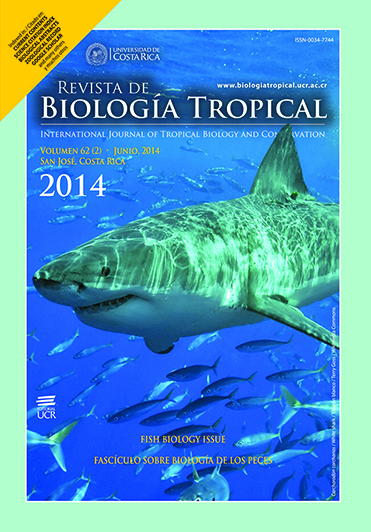Abstract
The dolphinfish (Coryphaena hippurus), is an oceanic epipelagic fish found worldwide in tropical and subtropical waters, with a high dispersal capability via large-scale migrations. This fast-swimming top-level predator is abundant in the Gulf of Tehuantepec, where it is caught incidentally by artisanal fisheries, and represents a target species for both recreational and commercial fisheries in Mexico, Ecuador, Peru and Central America. Nowadays, local fishery information on this species is scarce, thus our objective was to analyze the size structure by sex and the catch-per-unit-effort (CPUE) tendency of dolphinfish caught in the Gulf of Tehuantepec, from 2000 to 2007. For this, fishery catches information was obtained from the artisanal fleet, at six landing sites in the Gulf, and the sex ratio, fork length (FL) and the catch per unit effort (CPUE) were estimated. From all sampling sites, a total of 3 494 females, and 3 877 males were obtained, and dolphinfish size as fork length (FL) ranged from 20.5 to 152cm. Fish size ranged from 25.5 to 148cm furcal length (FL) in males, and 20.5 to 129cm FL in females. The sex ratio (males:females) was 1:1, except in April-May (1:1.5, p<0.05) and November (1:0.5, p<0.05). The sex ratio at different size classes showed a significant bias towards females at smaller sizes (<75cm FL), whereas the males were predominant in larger size classes (>100cm FL). The size structure was bimodal, with a variation in the size average; the modes were defined as the small group (FL=50-55cm) and the large size group (FL=100-110cm). The CPUE showed seasonal changes: values were high for the November-December period, and values were lower for July-August. The seasonal and inter annual variation in the abundance of dolphinfish is probably related to a pre-spawning migration in close relation to the rain-drought regime characteristic of the region, and the associated wind upwelling season of "Tehuanos" in the Gulf of Tehuantepec.
##plugins.facebook.comentarios##

This work is licensed under a Creative Commons Attribution 4.0 International License.
Copyright (c) 2014 Revista de Biología Tropical






